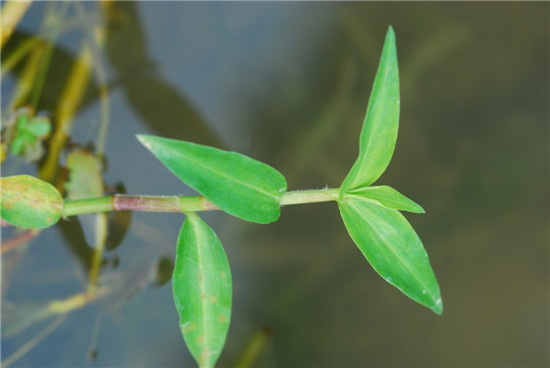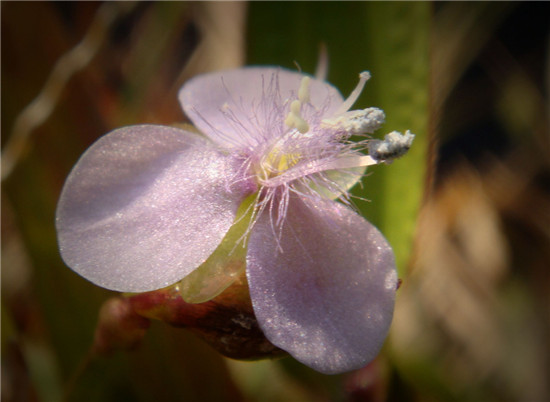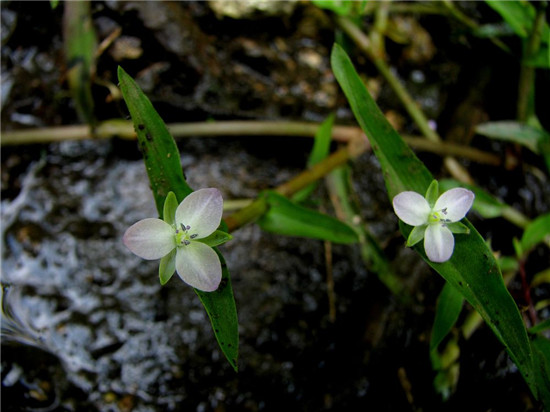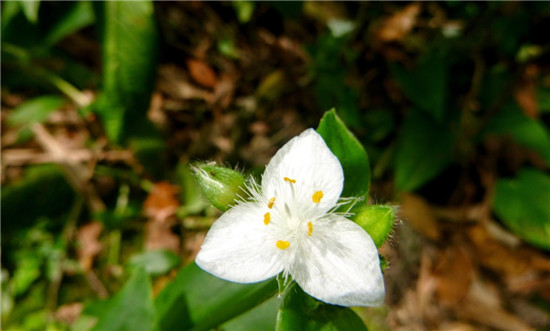What is the leaf of Phyllostachys pubescens? what is the plant?
Phyllostachys pubescens leaves are plants of the family Caryophyllaceae, which contain protein, fat, carbohydrates, vitamins, minerals and other nutrients. Next, let's learn more about this plant.

Phyllostachys pubescens leaf is one of the main weeds in rice field, also known as fleshy grass. With long and transverse rhizomes, rhizomes with leaf sheaths, internodes ca. 6 cm long, with slender bearded roots on nodes. Stem fleshy, lower creeping, rooting on nodes, ascending above, usually much branched, up to 40 cm long, internodes 8 cm long, densely covered with a row of white bristles, continuous with a row of hairs from the lower leaf sheath.
Leaves sessile, with only a row of hairs at the lower part of the leaf blade and at the suture of the leaf sheath, which joins with the previous node to form a series, where the leaves are glabrous. Leaf blade bamboo-shaped, spreading or slightly folded, 2-6 cm long and 0.5-0.8 m wide, apex acuminate and head obtuse.

Inflorescences usually have only a single flower, terminal and axillary, peduncle 1-4 m long, terminal long, axillary short. There is a bract in the middle of the peduncle, sometimes a flower in the axil of the bract. Sepals green, narrowly oblong, shallowly navicular, 0.4-0.6 cm long, glabrous, persistent in fruit.
Petals pink, purplish red or blue-purple, Obovate, slightly longer than sepals. Filaments densely grow beard hairs, capsule oval-shaped trigonous, 0.5-0.7 cm long, 0.3-0.4 cm in diameter, obtuse or mucronate at both ends, with 3 seeds per locule, sometimes only 1-2. Seeds short columnar, slightly flattened, red-gray.

The dormancy period of seeds is short, and dormancy is released in early spring. The starting temperature of seed germination is low, about 10 ℃, and the germination peak is formed at 15-20 ℃. The humidity range of seed germination is wide, and the soil water content is 15% and 20%, which can occur in large quantities.
Therefore, it began to germinate in the wheat field, the ridge of the field and the edge of the ditch in March, and reached the germination peak from April to May, with branches and underground rhizomes growing at the same time. The paddy field mainly depends on the regeneration and propagation of the remaining plants after ploughing in the wheat field, and the young plants on the ridge and the edge of the ditch flow into the field with irrigation water, and there are few seedlings. Due to the strong regenerative ability, the peak was soon formed in the paddy field.
Phyllostachys pubescens leaves grow throughout the year in the south, showing as perennial weeds, and overwintering plants blossom in May. The Yangtze River valley is dominated by seed overwintering and reproduction, showing as annual weeds, flowering from late August to mid-September, fruiting in mid-late September, maturing seeds from late September to the first and middle of October, and the capsule will naturally crack after maturity, fall off from the field and go into dormancy. The whole growth period is about 200 days.

Dietotherapy effect of Polygonatum odoratum leaves:
This taste is sweet, but the sex is flat. Enter the two meridians of liver and spleen. Efficacy of heat-clearing, diuresis, detumescence, detoxification. Main treatment of lung heat asthma cough, red and white dysentery, adverse urination, sore throat, carbuncle furuncle swelling.
Guide to the practice of Phyllostachys pubescens leaves
1. Treatment of pneumonia, high fever and wheezing cough: five to eight dollars for fresh water bamboo leaves. Drink and fry with water, mix honey clothes, twice a day.
2. Red white for intestinal fever and dysentery: one or two fresh water bamboo leaves. Wash, fry soup, mix a little black sugar for internal use.
3. It is disadvantageous to treat urination: one to two taels of fresh water bamboo leaves. Add water to fry, mix rock sugar for internal use, twice a day.
4. Treat sore tongue: fresh water bamboo leaves, juice, a cup of boiled water, gargle, about five to six minutes, several times a day.
5. Treat boils and boils: fresh water bamboo leaves, rock candy five dollars. Take the stew and apply the residue to the affected area.
6. Cure corns: smash fresh bamboo leaves and winter honey and apply to the affected area, change it two to three times a day.
7. for the treatment of fingertitis without purulence: fresh water bamboo leaves, stems and leaves are grasped, vinegar grains are a little. Smash it together and apply it.
The above is the whole content of what is the leaves of Phyllostachys pubescens and what plants they are. I hope this article can help you. Please continue to follow us.
Related
- Wuhan Hospital Iron Tree Blooming Result Was Instantly Frightened by the Gardener Master
- Which variety of camellia is the most fragrant and best? Which one do you like best?
- What is the small blue coat, the breeding methods and matters needing attention of the succulent plant
- Dormancy time and maintenance management of succulent plants during dormancy
- Minas succulent how to raise, Minas succulent plant pictures
- What are the varieties of winter succulent plants
- How to raise succulent plants in twelve rolls? let's take a look at some experience of breeding twelve rolls.
- Attention should be paid to water control for succulent plants during dormant period (winter and summer)
- Watering experience of twelve rolls of succulent plants
- Techniques for fertilizing succulent plants. An article will let you know how to fertilize succulent plants.



